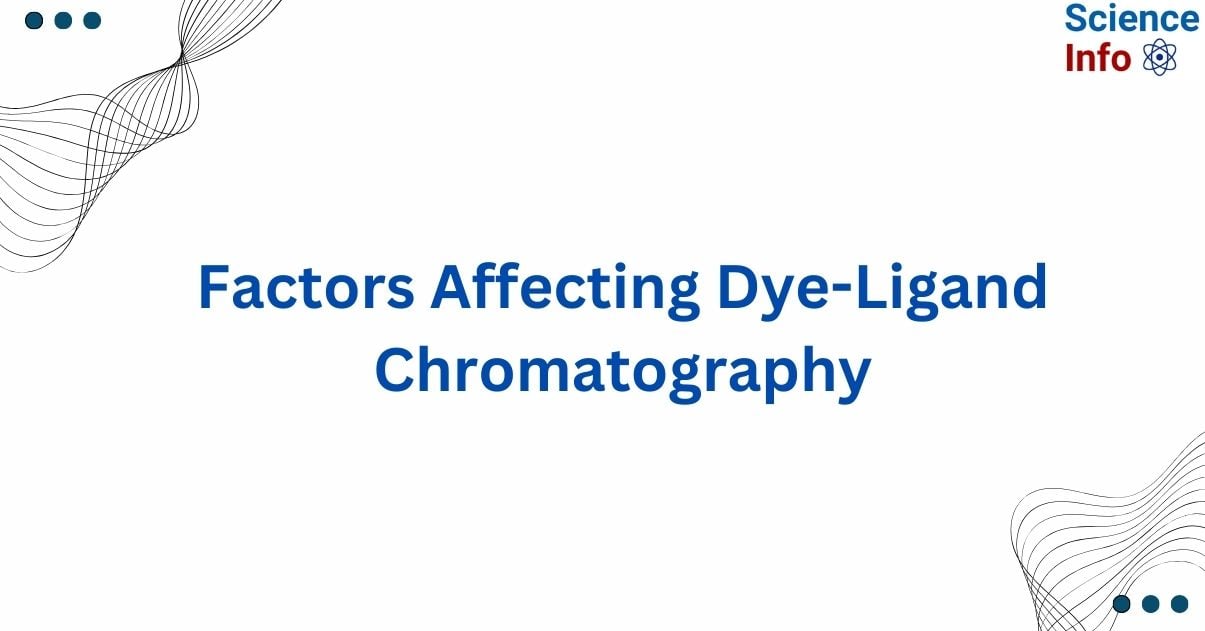
Dye-ligand chromatography uses immobilized textile dyes to purify proteins. The discovery of unanticipated interactions between Blue Dextran Cibaron Blue, dextran conjugate, a void marker used in size-exclusion chromatography, and certain kinases led to the development of dye-affinity chromatography.
Dye ligands can mimic enzyme substrates, leading to increased affinities and interactions. The intricate interplay of electrostatic, hydrophobic, and hydrogen bonding interactions enables the dye-ligand to bind with proteins.
Although dyes are all synthetic, they are classed as affinity ligands because they interact with the active regions of many proteins, resembling the structure of their substrates, cofactors, or binding agents. Several textile dyes, known as reactive dyes, have been utilized for protein purification. The majority of these reactive dyes are made up of a chromophore (such as azo dyes, anthraquinone, or phthalocyanine) and a reactive group (usually a mono- or dichlorotriazine ring).
Unlike specific biological ligands, dye ligands have several benefits, including low cost, high binding capacity, high chemical and biological stability, and ease of immobilization.
Interesting Science Videos
What is Dye-ligand Chromatography?
It is a type of affinity chromatography, used for the purification of biomolecules like proteins anducleic acids.
In this approach, the stationary phase is comprised of a dye molecule that is covalently linked to a solid support, such as a resin or gel. The dye should have a specific affinity for the target biomolecule.
It has high applicability over other techniques due to its high selectivity, mild elution conditions, and the capacity to separate target compounds from complex mixtures.
Dye ligands interact with proteins by an intricate combination of electrostatic, hydrophobic, and hydrogen bonds. The first crucial factor in dye-affinity systems is the choice of supporting matrix.
Structure and interaction of dye-ligands
Textile dyes, also known as reactive dyes, can selectively and reversibly bind to a range of proteins in dye-ligand affinity systems, making them effective for protein purification. Reactive dyes in dye-affinity systems often have a chromophore (such as azo dyes, anthraquinone, or phathalocyanine) and a reactive group, typically a mono- or dichloro triazine ring. Sulfonic acid groups ensure the molecule’s solubility in aqueous environments. These groups are negatively charged across all pH levels. Some dyes have carboxyl, amino, chloride, or metal complexing groups, whereas the majority have nitrogen within or outside the aromatic ring.
A protein’s binding site is a distinct arrangement of ionic, polar, and hydrophobic groups in its three-dimensional structure. This is where polypeptide chains typically demonstrate the most flexibility. The dye-ligand molecules form a non-covalent contact with the protein, resulting in tight and selective binding.
Advantages of dye-ligand affinity absorbents
- They have low cost.
- Are readily available in bulk quantities.
- Can be easily coupled to matrixes via the reactive group.
- They display high binding capacity for a wide range of proteins.
- They are chemically stable over a range of pH extremes enabling full recovery of activity after cleaning.
Factors affecting dye-ligand chromatography
Different factors that affect ligand dye chromatography involve:
Choice of dye ligand
Depending upon the charge, hydrophobicity, and size, different dyes have different affinity towards biomolecules. So the selection of dye ligand is a crucial step in ligand-dye chromatography and it depends on its specific affinity for target molecules.
Ionic strength
The ion concentration in the mobile phase affects how the dye ligand and target molecule interact electrostatically. Changing the ionic strength can influence binding affinity and selectivity.
pH
Binding affinities between ligands and dyes can be affected by pH. So optimal pH should be chosen while performing this chromatographic technique.
Matrix
The nature of the solid support matrix (such as pore size, surface area, and mechanical stability) on which the dye is immobilized can have a direct effect on the effectiveness of the chromatographic technique.
Temperature
Kinetics of the binding and elution processes can be altered by changing temperature. Optimal temperature conditions must be maintained to ensure effective binding of the target molecule to the dye ligand and subsequent elution.
Sample composition
Binding and elution efficiency can be affected by the sample solution’s composition, which includes the target biomolecule’s concentration, the presence of contaminants, and buffer components.
Chaotropic agents and detergents
Chaotropic substances, including urea and guanidine, can be used to improve a buffer’s elution or washing effects. One can also use non-ionic detergents like Triton X100 and Tween 80. These elements control how hydrophobically proteins bind with the dye ligand. Making sure the chosen concentration is compatible with protein activity requires careful consideration.
Solvents: Dye ligand affinity for proteins is increased by hydrophobic interactions. The elution buffer strength can be increased by adding non-denaturing solvents, like glycerol or ethylene glycol, to increase the yield of protein. Use of up to 50% is possible.
References
- Anne F Worrall, “Factors Effecting Dye Ligand Affinity Chromatography: A Purification Technique”, Bio Bulletin (2022), Vol. 8(4): 5-6.
- https://www.news-medical.net/life-sciences/Dye-ligand-Affinity-Chromatography-for-Protein-Purification.aspx
- https://www.news-medical.net/life-sciences/Dye-ligand-Affinity-Chromatography-for-Protein-Purification.aspx
- https://link.springer.com/protocol/10.1385/0-89603-213-2:91#:~:text=Dye%2Dligand%20affinity%20chromatography%20is,interact%20with%20the%20immobilized%20dye.
- https://pubmed.ncbi.nlm.nih.gov/18826048/
